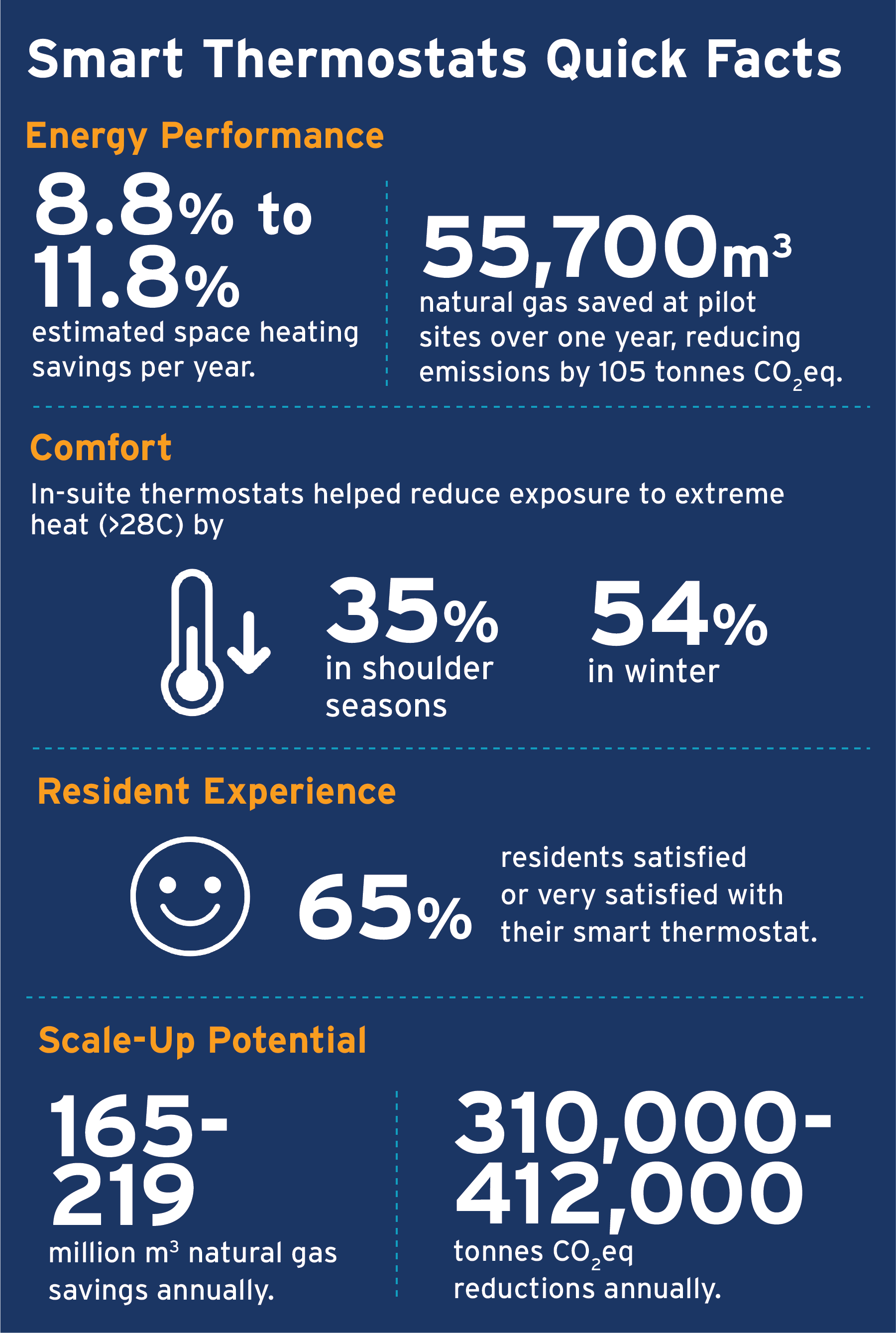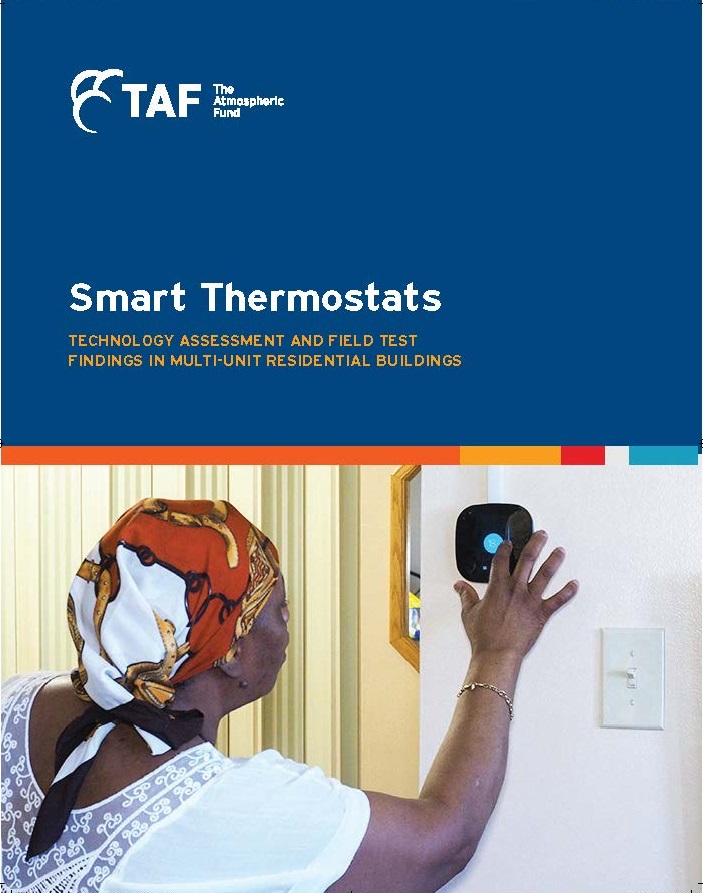New TAF research estimates smart thermostat retrofits in multi-unit residential buildings can provide 8.8-11.8 per cent energy savings while also providing tenants with comfort and control.
Closing the carbon emissions gap with smart thermostats
Space heating in multi-unit residential buildings (MURBs) (such as apartment buildings and condos) accounts for an estimated 3.5 megatonnes of annual emissions in Ontario. While high-efficiency heating equipment, such as condensing boilers, can reduce this substantially, this is just one piece of the puzzle. Smart thermostats, which provide in-suite heating control, also have a key role to play in decarbonizing the MURB sector.
As part of a three-year study on energy efficiency retrofits and indoor environmental quality, TAF evaluated the energy savings and associated carbon emission reductions from installing in-suite smart thermostats in four apartment buildings in Toronto. The project saw an emissions reduction of 105 tonnes CO2eq, and identified a host of co-benefits through monitoring and resident surveys.
Not just energy savings – comfort improvements too
In-suite temperature controls better align heating output with a resident’s heating demand. Pre-retrofit, residents identified over-heating as a prevalent issue. Smart thermostats helped decrease overheating by 35-54 per cent. But that’s not all; when residents are able to control suite temperatures their thermal comfort improves, and counter-productive behaviours (such as opening windows in winter in order to cool their space) are reduced.
Smart thermostats show great scale-up potential as carbon reduction strategy
The majority of MURBs in Ontario share similar challenges as these pilot sites — old mechanical equipment with no turn-down capability, overheating, and lack of in-suite controls. Smart thermostats could potentially save between 164-220 million m3 of natural gas across Ontario, per heating season. This is equivalent to taking as many as 87,473 passenger vehicles off the road annually.
In-suite smart thermostats have the potential for rapid adoption, as has already been seen in the single-family homes sector. Industry stakeholders can do a number of things to facilitate this adoption within the multi-family sector as well:
- Utilities: provide incentives for MURB owners and operators, and promote the benefits of in-suite smart thermostats, particularly as part of larger energy efficiency retrofits featuring boiler and/or heat pump upgrades
- Smart thermostat manufacturers: provide centralized control through online portals for building operators, ability to wirelessly connect to radiator control valves, and control of multiple zones through one thermostat
- Building Owners/Operators: approach retrofits holistically by considering smart thermostats as part of larger HVAC retrofit projects. Resident engagement can also offer important insight to help inform retrofit plans, and build resident support
Curious to learn more? Read the full report.


